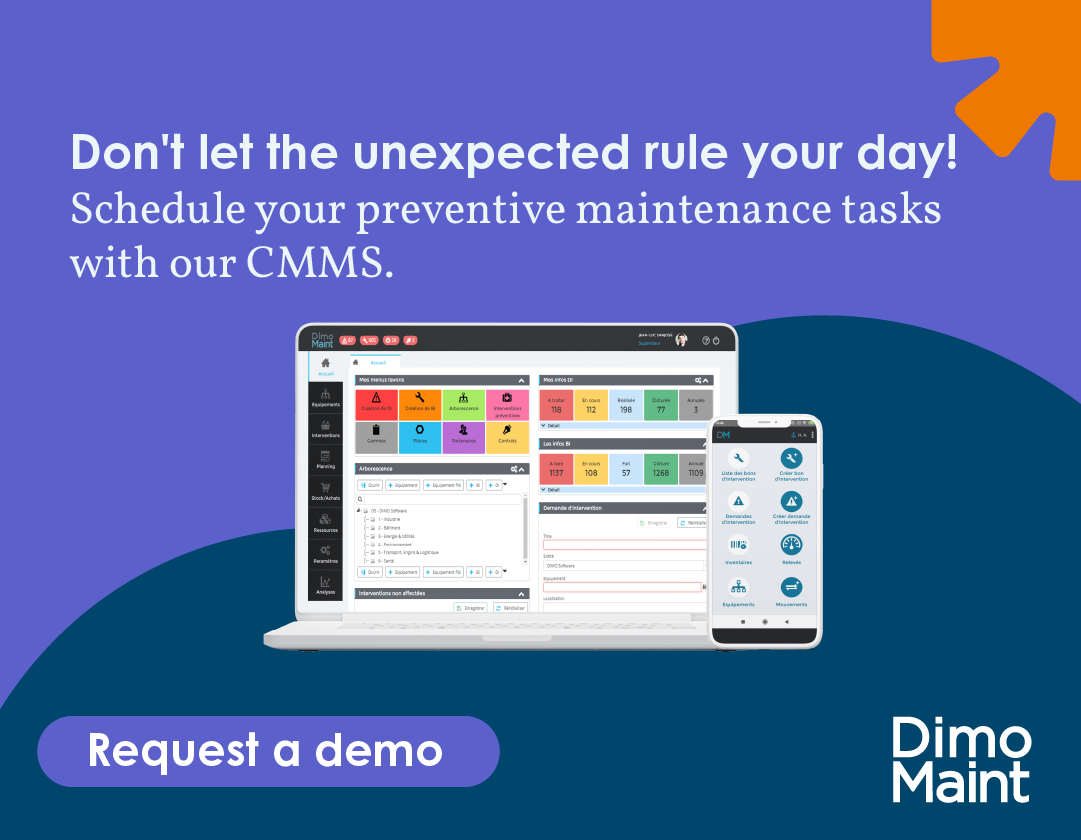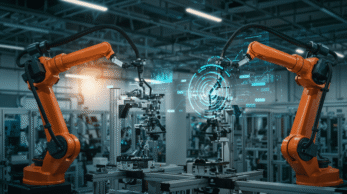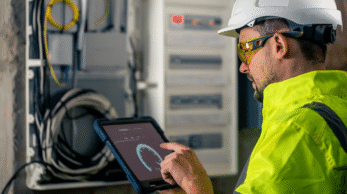What does “lean maintenance” mean ?
Initially focused purely on improving production, this concept was invented by the Japanese group Toyota. This innovative approach optimised production by reducing or eliminating wasted time, expertise and budget. Jim Womack (1), who standardised the concept and named it “LEAN MANUFACTURING”, even indicates that this operation creates more and more value with less and less time, space and error.
This approach extends to Maintenance by giving the maintenance department a proactive role in improving the manufacturing process compared to traditional maintenance. It involves improving rather than maintaining/repairing by giving the maintenance department time to focus on long-term solutions.
What are the key features of Lean Maintenance?
Lean maintenance activities are fully aligned with the organization’s goals. One of its core principles is waste reduction, whether it’s due to over-maintenance, lack of maintenance, downtime, or excess spare parts inventory.
Lean maintenance also relies on a Kaizen culture, which emphasizes continuous improvement within the maintenance team. This means the technical staff is constantly looking for ways to improve processes, minimize waste, and increase efficiency.
Data visualization plays a crucial role by making maintenance processes more transparent and easier to understand. Standardizing procedures also ensures consistency and quality in every task.
Maintenance activities are carried out based on the specific needs of each piece of equipment, rather than following a rigid schedule. This helps reduce over-maintenance and eliminates unnecessary tasks.
The maintenance team is actively involved in decision-making and problem-solving. Operators and technicians collaborate to identify issues more easily. This teamwork between operators, maintenance staff, and managers streamlines the process of continuous improvement.
Finally, another key philosophy of Lean is to address the root cause of problems to prevent them from recurring. This involves a deep analysis of data and performance metrics to improve decision-making and drive ongoing improvements.
Lean maintenance helps boost productivity by integrating practices such as Total Productive Maintenance (TPM). TPM is a comprehensive organizational strategy aimed at achieving high performance. In industrial maintenance, it promotes a participatory approach where operators, who are familiar with their machines, play an active role in maintaining them.
What are the main steps towards a lean maintenance implementation ?
A maintenance audit is typically necessary to identify the department’s strengths and weaknesses.
Its purpose is to identify the flows and propose solutions to stabilize the faults and take full advantage of the team and company attributes.
Support can continue while implementing Lean Maintenance, which involves:
1. developing standardized practices to stabilize and extend the life cycle of equipment and components
2. progressively expanding these practices to optimize response capacity and increase the time span between each work order.
3. sending routine maintenance operations to production without losing maintenance quality
4. improving store, scheduling, reporting and analysis management tools
5. managing projects and providing equipment and components ahead of time, i.e. anticipation
This investment creates a tangible ROI (return on investment) and enhances the maintenance team and therefore the human resources.
More generally, should this “LEAN” approach not be made systematic so that we can all, on an industrial and personal level, use less material and energy to create as much as (or more than) we consume, while saving but also respecting our environment?
What are the benefits of Lean Maintenance?
Lean maintenance takes a holistic and systematic approach aimed at optimizing maintenance processes, improving equipment reliability, reducing waste, and adding value to both the organization and its customers.
Lean maintenance activities are always aligned with the company’s goals, ensuring that maintenance efforts directly contribute to the success of the business.
Lean fosters a culture of continuous improvement (Kaizen) that involves the entire organization. The goal is the ongoing improvement of all processes.
Lean maintenance is a proactive, results-driven approach that seeks to transform the company’s culture. By adopting its principles, you improve efficiency, increase equipment reliability, and boost the organization’s competitiveness.
In Lean maintenance, preventive and predictive maintenance operations play a key role in preventing equipment failures and minimizing repair interventions.
To further optimise maintenance processes and ensure thorough tracking of interventions, it’s recommended to use a CMMS (Computerized Maintenance Management System), which integrates seamlessly with Lean principles.



